
Introduction to the Bryston 28BSST2 Amplifier
Lately I had been sampling the Bryston Mini T Bookshelf speakers with my reference amp, a modest Marantz Integrated, and though they matched well I wondered how they would fare with some serious Bryston power behind them. So when Bryston offered up some 28BSST2 ‘s for review I had one stipulation: let me try them with the Mini T’s.
Be Careful What You Wish for…, lyrics from the title track of Gabby La La’s debut album, played in my mind as I unboxed the 90lbs Bryston 28BSST2 mono blocks from their shipping cartons. As I struggled to maneuver these massive hunks of aluminum and iron into my equipment closet, ’cause it might come true.
And then I had another thought, maybe I should have asked for the Bryston headphone amp.
BRYSTON 28BSST2 POWER AMPLIFIER SPECIFICATIONS
- Design: Solid State, Monoblock, Class AB
- Power output: 1,000 Watts into 8 Ohms, Clipping at 1,300 Watts
- Gain @ 1 V Input: 29 dB
- Input Impedance: Single Ended: 30 kOhms Balanced: 60 kOhms
- THD: < 0.005% 20 Hz to 20 kHz at 1,000 Watts into 8 Ohms
- Noise: 20Hz to 20 kHz; >110dB Below Rated Output
- Power Bandwidth: < 1 Hz to over 100 kHz
- Damping Factor: > 500 @ 20 Hz and 8 Ohms Load
- Power Consumption @ Idle: 215 Watts
- Power consumption @ 1,000 Watts Output into 8 Ohms: 1,486 Watts
- Dimensions: 8″ H x 17″ W x 20.5″ D
- Weight: 92 Pounds
- Price: $9,600/each USD/CDN
- Bryston
- SECRETS Tags: Bryston, Stereo, Amplifiers, Power Amplifiers, Audio
Design and Setup of the Bryston 28BSST2 Power Amplifiers
The Bryston 28BSST2 is their flagship power amplifier. It is a single channel (mono) amplifier with enough power (and finesse they claim) for even the most difficult or inefficient speaker. Designed to have an ideal power curve from the first to the last watt (most amps have only a sweet spot within their operating range where they sound best). By using dual mono-block amplifiers you have the benefits of individual power supplies (the 28BSST2 have 2000 VA each) and you can place them near each speaker permitting short speaker cable runs.

Bryston rates the 28BSST2 amplifiers at 1000 watts into 8 ohms; they feature both balanced and unbalanced inputs, and are fully convection cooled negating any need for fans. They come in either silver or black and with 17″ or 19″ faceplates (with handles, but no rack mounts) and sit at 4U high. They are massively overbuilt and weigh a back-straining 92lbs each. The amps have a special micro-controlled soft start which reduces the current inrush when turning on these beasts. They have been designed to have exceptionally low noise thanks to the AC being shielded from all other components. And of course are backed by Bryston’s industry crushing 20 year warranty.
James Tanner of Bryston explains that while this amp is the Bryston flagship, it is not necessarily their best sounding amplifier. This is their most powerful amplifier (and most expensive) yet does not stray sonically from the lower priced amps. Bryston recommends choosing the amp based on the system and room requirements. This also means one could mate the 28BSST2‘s to the 14BSST2 or 7BSST2 in a multichannel setup and still retain the timbre balance that is essential.
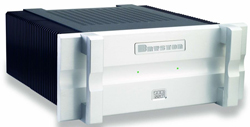
As Bryston claims this amp able to work with most any speaker and to sound great regardless of the power output, I chose three very different speakers to test the amp. I used the Bryston Mini T rated at 86dB SPL as an inefficient speaker, my difficult to drive MartinLogan Vista (rated at 4 ohms nominal yet dip down to 1.2 ohms) and my Frugel-Horn MK3 which has a single 4″ delicate Mark Audio Alpair 7en driver to test the sound quality and finesse at low to moderate volumes. Each system used an Oppo BDP-105 as a source, Bryston BP17 pre amp and Blue Jean Cables connecting it all together.
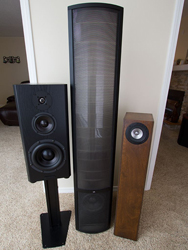
The Bryston 28BSST2 Power Amplifiers In Use
Mini Ts
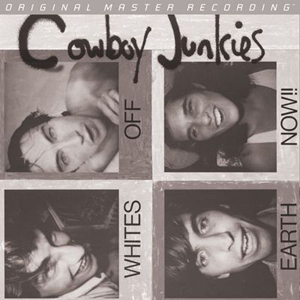
Where the Bryston Mini T’s excelled was dynamic range. Easily the most dynamic recoding in my collection is the Cowboy Junkies on SACD, Whites off Earth Now. What initially grabbed me with “Baby Please Don’t Go”, was the bottomless depth to the sound. From the light whisper of Margo’s vocals to the barely audible brush on the drums, I heard further into the music and soundstage than I ever had before. Previous to the Bryston system I used this recording to test the loudness and impact of the guitars, never before had I experienced such an increase in the soft and subtle end of the dynamic range – and was taken aback.
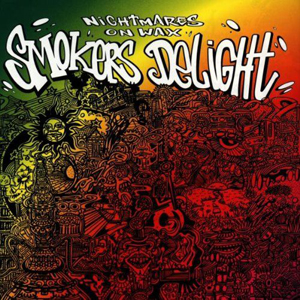
Nightmares on Wax have an interesting track called “Gambia via Vagator Beach” found on their Smokers Delight album. This percussive heavy track features hand drums, electronically sampled deep bass effects, and builds surprisingly slow and from low levels causing one to reach for the volume control. Which I did, I turned the solid volume control on the BP17 to ¾ full I was utterly unprepared for the bass that came forth from these in-accurately named Mini T’s. Added to the bass was excellent instrument separation of the multiple hand drums located in different spaces throughout the sound stage. This was an excellent track to test for bass control, with lesser equipment the accompanying percussion would be easily muddied up. No such fault was found with the Bryston.

Gabby LaLa’s Be Careful What You Wish For still bounced around my head and I opted next to sample her song “Pirates”. This playful tune opens with a high hat counting time, a great song for getting the feel of the pace of the component, and at the same time is brutally reveling of tipped-up high frequency presentation. There was nothing ugly about this pairing and any preconceived notions about harsh sounding metal tweeters were certainly squashed. There was detail but no fatigue and clarity without the artificial sizzle that some expect with metal tweeters. The bass-line foundation by Les Claypool was well controlled and had solid definition. This was the first time I perceived a slight increase in tempo compared to my Marantz integrated, it did not feel wrong just different.
Enter the Panels
While these amps certainly pair well with the Bryston bookshelves, I was very curious to hear them powering my reference MartinLogan Vista speakers. These speakers, when fed the right power have an uncanny sense of soundstage and imaging. One of my favorite tests of imaging is with well recorded drum tracks. And when it comes to drums, Japanese ensemble taiko drumming (kumi-daiko) combines sheer dynamic range, precise imaging and historical significance and is unmatched in impact and depth.
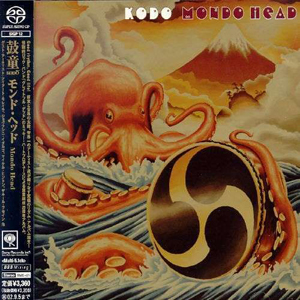
Kodo’s Mondo Head on SACD is an amazing example of this beautiful musical art. Listening to “Daraijin”, I found that the song highlights the importance of low noise floor as the various percussive instruments are given their own space and the decay of each of the many drums is integral to the impact and emotion. The MartinLogan’s throw both a wide and deep soundstage when fed with accurate upstream components but can fall apart with lesser gear. And like all electrostatics, have an unfortunately small sweet spot. Outside the sweet spot with the Bryston system there was still a great sense of scale and realism. Even at high volume levels these more difficult speakers caused no strain whatsoever on the amps.

Another track featuring drums, Tool’s “Reflection” (Lateralus) can easily be fatiguing and muddy but there was no issue with this system. The drums were each well defined, with the high hats coming in with more clarity and space than I had heard before. The bass guitar was strong and never sloppy. Vocals had great center image and were clear and distinct despite the increasing intensity of the band. This song is not an easy play and has been in my line up for a long time. Once again, Bryston exceeded and redefined expectations of what the right system could do with this song.
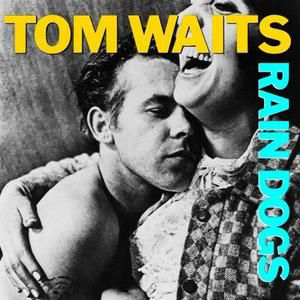
In my first ever review I used a track from Tom Wait’s Rain Dogs, “Walking Spanish”, and I still use it today. Tom’s unique vocals came through perfectly centered and accurately weighted against the stand up bass. The dual saxamophones each had their own distinct spot on the stage. Through the Bryston components I noticed there was a greater sense of depth and realism to each instrument. As before pacing felt a tad more urgent than through my Marantz amp, however presented no negative to the performance.
Back-Loaded Frugel Fun
It was obvious that this Bryston power and pre system was well suited to powering big speakers with big drivers and large radiating surfaces. What about speakers who require a more delicate presentation and who shine at low to mid listening levels? Time for the Frugel-Horn MK3 single driver speakers. The 4″ Mark Audio Alpair 7en drivers have incredible resolution for their size and the back-loaded box design squeezes unimaginable bass from them. However the midrange is where they excel so I cued up some vocal heavy tracks.
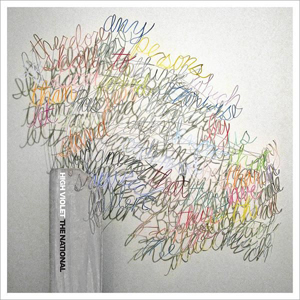
The National, with their baritone vocals, great song-writing and difficult instrument arrangements combine to create an interesting and challenging sound. While not the cleanest or most dynamic recording High Violet still contains some review worthy tracks. Especially the soft and emotional “Runway” with its emphasis on the vocal track supported by the bands subdued yet perfectly balanced playing. Through the Bryston system there was a previously unheard decay in vocals which added a new layer of depth to the song. Also noted with the MartinLogan’s the pacing and rhythm initially felt slightly faster than with my reference amp, yet seemed more accurate. There was still great bass control and response even at low volumes. The rolled-off top end of the speakers was pleasant with my Marantz, not so pleasant with my Parasound amp and, by far, was most enjoyable with the 28BSST2s.

If there is one single track in my entire collection that best exemplifies vocal reproduction it is the Spanish A Cappella cover version of Roy Orbison’s “Crying by Rebekah Del Rio”. This is featured on Angelo Badalamenti’s soundtrack to David Lynch’s Mulholland Drive. Even at high volumes (which I normally avoid with these delicate drivers) was the sound was tonally accurate and full of emotion; again the decay of the notes was noticeably deeper. Played back at lower volumes with my reference amps the beauty and emotion is sometimes lost and the track can be missing energy and depth that make it fun to listen too, yet as advertised, the 28BSST2 had a wide power range and this track was enjoyable at all levels.

And finally I brought it back to Tool, from their first full length album Undertow. Flood starts with a slow build, centered on Danny Carrey’s massive drum kit. The drum kit through the Bryston system took on startling depth with impact and dynamic range previously not experienced through these diminutive 4″ drivers. When the song finally begins to get moving, at the 4 minute mark, the bass lines bring forward a strong beat that underlines the solid vocals from Maynard. Unlike with lesser systems the vocals were never buried behind the huge drum and bass lines. The top end was surprisingly clear and well represented despite these being a single driver (no tweeter) design.
Conclusions about the Bryston 28BSST2 Power Amplifiers

Like Tool’s Maynard James Kenan sings in Flood “I was wrong, this changes everything”. My time spent with the 28BSST2s has made me rethink the importance of amplification and power in the playback chain. The endless current and attention to detail of the 28BSST2s changed my opinion of what an amp could do. As well the increased low-level resolution changed my opinion of what an amp should do. The sheer dynamic scale was staggering and provided accurate reproduction without being clinical. Their ability to work with a wide range of speakers is a testament to the achieved design goals by the team at Bryston.

As an entire system the Bryston Mini T speakers, BP17 preamp and 28BSST2 amplifiers combine to create a reference-grade system capable of realistic output levels and low–level finesse. At ease with all kinds of music the system excelled with complex percussive tracks which benefited greatly from the astonishingly low noise floor and yet they could switch over to delicate vocal tracks without losing the emotion and beauty. My experience with this system has forever reshaped my reference and I look forward to comparing other systems to this benchmark.

Associated gear reviews:
Bryston Mini T’s
MartinLogan Vista
Frugel-Horn MK3
Bryston BP17
Oppo BDP-105


